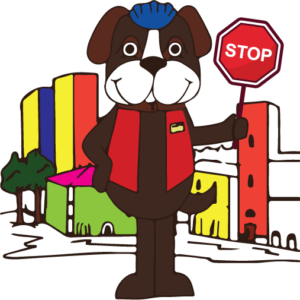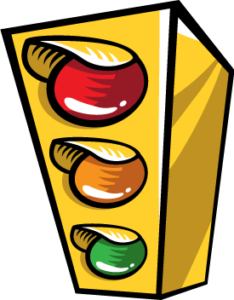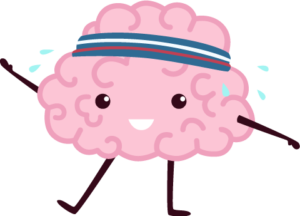Safety Tips for Parents with Children in Elementary School
Pedestrian Safety
Safety Lessons for Crossing Streets
Background:
- Children dart into streets because they lack impulse control and are easily distracted
- Children under 10 do not have the ability to gauge speed and distance and should always cross with an adult
- Parents are role models and help children understand and develop safe decision-making skills
Skill Development:
1. If you see a car, can the driver see you?
- Wear bright colors – Use wax paper to show low light effect
- Wear reflective material – Find shoes, jackets, backpacks with reflective tape
2. Always Stop, Look and Listen at the Edge of the Street
- Are there cars coming – Create a stop and go game
- Can the driver see you – Identify barriers like bushes, trash cans, etc. that hide pedestrians
3. Look Left, Right, and Left Again Before Crossing the Street
4. Crossing the street
- Hold hands
- Walk don’t run
- Continue to look left and right for cars
Resources:
Video: http://www.pedbikeinfo.org/pedsaferjourney/
Safety Lessons for Intersections
Background:
- Children need practice attention switching so they can identify safe places to cross
- Concentration allows them to continue scanning traffic while crossing the street
- Parents are role models they can use “what if” to develop scenarios and reinforce safe decision-making
Skill Development:
1. Finding a safe place to cross the street
- Walk neighborhood to identify safe routes to school
- Identify barriers like parked cars, bushes, trash cans, etc. that hide pedestrians
- Determine strategies for crossing safely
2. When to cross the street safely
- Always Stop, Look, and Listen
- Look Left, Right, Left and Behind
- Are their cars coming from behind
Activity:
Mark streets with masking tape, use chairs for cars and identify safe strategies for crossing to each destination in a four-way intersection.
Create a stop and go game with a traffic light Walk symbol on green paper and the Stop symbol on red paper. Play a stop and go game where children hold the correct symbol in response to the Stop command and say “Red Hand Stop” and to the Go command “Green Man Go.”
Wave and Wait for Drivers to Wave Back Before Crossing the Street
 Once upon a time there was pet called Wavy the Weiner Dog and every day Wavy and his family walked around the neighborhood. They followed safety rules by looking both ways before crossing the streets at crosswalks. One day they saw a boy about to step in front of a car that did not see him and the crosswalk. Wavy the Weiner Dog saved the day by barking at the boy and he stopped just in time to miss being hit by the car.
Once upon a time there was pet called Wavy the Weiner Dog and every day Wavy and his family walked around the neighborhood. They followed safety rules by looking both ways before crossing the streets at crosswalks. One day they saw a boy about to step in front of a car that did not see him and the crosswalk. Wavy the Weiner Dog saved the day by barking at the boy and he stopped just in time to miss being hit by the car.
Wavy’s family decided they needed to Wave and Wait for the driver to Wave Back so they know they were seen and to Wait until the car comes to a complete stop so they can safely enter the crosswalk.
Parents are role models and need to Wave Back to pedestrians so they know they can safely cross the street.
Bicycle Safety
Bicycle helmets are like seat belts using them prevents serious injuries by protecting your brain.
Wear a Bicycle Helmet to Protect Your Brain! 
Background:
- Helmets reduce head injuries by 85% by protecting your brain from the impact of a bicycle collision.
- Helmets must fit properly so they stay in place and cover the forehead.
Instructions for correctly fitting helmets:
https://www.nhtsa.gov/sites/nhtsa.dot.gov/files/8019_fitting-a-helmet.pdf
https://www.nhtsa.gov/road-safety/bicycle-safety
Parents are role models and wearing properly fitted helmets reinforces safe bicyclist behavior. Bicycle helmets are proven to prevent serious injuries by protecting your brain.
Be Seen and Be Predictable
- Always ride in the direction as the traffic
- Use hand signals to let drivers know where you are going
- Wear bright colors so you are visible
Don’t use head phones or an electronic device
Bicyclist safety tips:
https://www.nhtsa.gov/sites/nhtsa.dot.gov/files/811557.pdf
https://www.youtube.com/watch?v=dkoVxBnnGko
Learning to ride a bicycle safely is the first lesson in becoming a safe driver. Parents are role models and they can reinforce safe decision-making by being a safe pedestrian, bicyclist and driver and wearing a properly fitted bicycle helmet.
Activities for 4 to 7 year old children:
Activities for 8 to 11 year old children:
Other Activities
https://one.nhtsa.gov/people/injury/pedbimot/bike/BSKitBoth/3152BSKit/pages/Section1/Youcanalso.html
Activity Materials:
https://www.nhtsa.gov/road-safety/bicycle-safety

